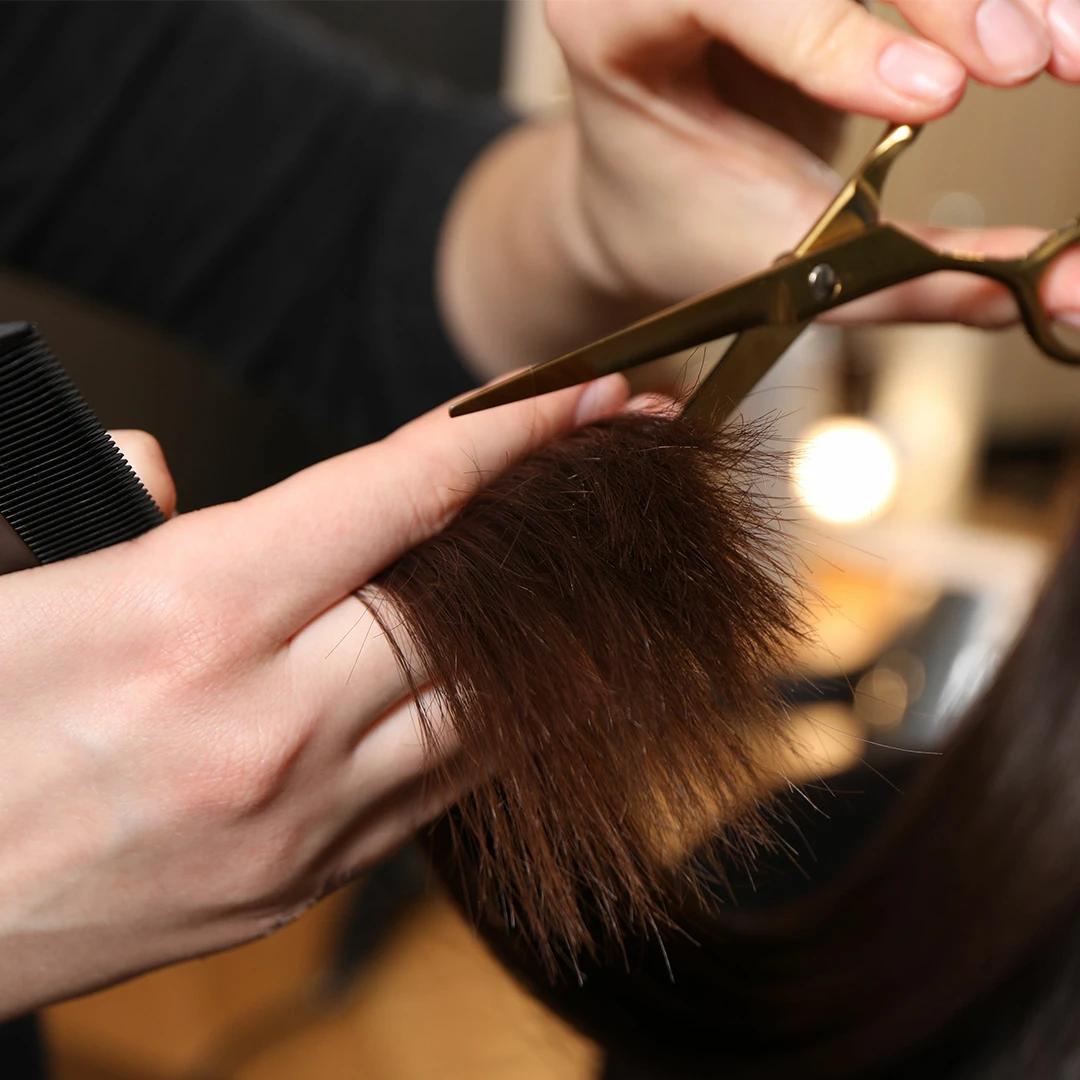Step Cut vs. Layered Haircut
Traditional layered cuts blend seamlessly for a more subtle effect, whilst step cuts create distinct, visible layers. Step cuts tend to add more volume and texture but require more precise cutting.
Layered cuts are generally more versatile for different styling options, whilst step cuts have a more specific, structured look.
Step Cut vs. Feathered Cut
The feathered cut creates soft, wispy layers that flip away from the face, giving a more retro vibe. Step cuts have cleaner, more defined layers with less flipping action.
Feathered cuts require more styling to achieve the signature look, whilst step cuts often fall naturally into place.
Step Cut vs. Graduated Bob
Graduated bobs focus on creating length variation from back to front, whilst step cuts create layers throughout the entire head. Graduated bobs are typically shorter and more structured.
Step cuts offer more versatility in terms of length and can be adapted to longer hair more easily than graduated bobs.
Troubleshooting Common Step Cut Issues
Sometimes things don't go exactly to plan with haircuts. Here's how to handle the most common step cut challenges.
Dealing with Uneven Layers
If your layers look choppy or uneven, don't panic. Often, this settles as your hair adjusts to the new cut over a few washes. If issues persist after a week, contact your stylist for adjustments.
Temporary fixes include strategic styling to disguise problem areas whilst you wait for a touch-up appointment.
Managing Frizz and Flyaways
Layered cuts can sometimes create more frizz, especially if your hair is naturally textured. Anti-frizz serums and leave-in treatments help control wayward pieces.
Regular trims prevent split ends that contribute to frizzy-looking layers, whilst deep conditioning treatments keep hair smooth and manageable.
Frequently Asked Questions
How long does a step cut take to grow out?
Step cuts grow out more gracefully than blunt cuts, usually taking 3-4 months to lose their distinct shape. You can extend the life of your cut with strategic trims that maintain some layering whilst growing out length.
Can I get a step cut if I have thin hair?
Absolutely! Step cuts are actually brilliant for fine hair because the layers create the illusion of thickness and volume. Just make sure your stylist doesn't over-thin the hair, which can make it look wispy.
Is a step cut suitable for curly hair?
Yes, but you'll need a stylist experienced with curly hair. The layers can create beautiful definition and reduce bulk, but incorrect cutting can cause uneven curl patterns or excessive frizz.
How often should I trim my step cut?
Every 6-8 weeks is ideal to maintain the shape, though some people can stretch it to 10 weeks depending on their hair growth rate and desired look. The face-framing layers might need more frequent touch-ups.
Final Thoughts
The step cut is honestly one of those styles that can transform your entire look with relatively low maintenance. It adds dimension, movement, and personality to your hair whilst working with your natural texture rather than against it. Whether you opt for subtle long layers or go bold with a choppy variation, this cut offers the perfect balance of structure and natural flow. Remember, the key to a gorgeous step cut lies in finding a skilled stylist who understands your hair type and lifestyle. With proper cutting and minimal styling, you might just discover your new signature look.
